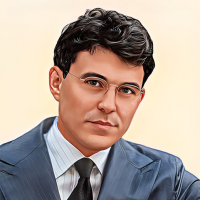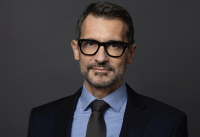Private markets have recently seen the most difficult conditions in more than a decade with persistent inflation, interest rates rising and declines in fundraising and deal activity. In this challenging climate, sponsors (GPs) have found it more difficult to exit assets at attractive valuations constraining distributions to investors (LPs).
In this context, secondary transactions have grown significantly providing liquidity to long-term illiquid asset classes. Indeed, despite private fund-raising contraction, across the private market, secondaries fundraising almost doubled in 2023. In 2024, it is expected that the global secondary private market will reach approximately $140 billion in size.
Traditionally, secondary transactions happened where, following an investment made in a fund, an existing LP wishes to exit the fund by selling its interest(s) to a secondary buyer. The secondary buyer after payment of the agreed transfer price (usually at a discount), steps into the shoes of that existing LP. This is known as LP-led secondary transactions.
Alongside LP-led secondary transactions, the private market is increasingly witnessing secondary transactions initiated and led by GPs, known as GP-led secondary transactions. These typically include tender offers, portfolio stripping sales and stapled transactions. However, the most popular trend for the last few years in this space has been the structuring of continuation funds, offering liquidity and flexibility for both GPs and LPs.
Continuation fund structure
In a typical private equity fund model, one of the significant features is the limited duration of the funds. Private equity funds typically have a duration of around eight to ten years with an option to extend the fund for a further one or two years, subject to the consent of the limited partners, whether through an advisory committee (LPAC) or an all-partners vote.
Once the fund term has expired, its assets are then liquidated and distributed to the LPs. However, liquidating an asset when the fund term expires may not optimise the returns from that asset, as it may have further value creation, growth and future returns potential. In a continuation fund, instead of liquidating such an asset, GPs retain it beyond the fund’s term by selling it from the existing fund (a legacy fund) to a newly established fund, a continuation fund. Existing LPs, which invested in the legacy fund, have the option of either rolling over their interests into the continuation fund or selling out (i.e. exiting the fund), or a combination of the two. In addition, new LPs can enter into the continuation fund and can therefore invest in more “mature” assets on a non-blind-pool basis.
The concept of ‘trophy assets’
Historically, continuation funds were used for distressed assets that were struggling in the aftermath of the 2008 global financial crisis; but at that time they were referred to as “restructuring funds”. However, back in 2015, GPs realized that their “restructuring funds” could be a useful portfolio management tool not only for distressed assets, but also for high performing or trophy assets.
From a GP perspective, using continuation funds provides a tool by which they can maintain continued exposure to their trophy asset(s) beyond the fixed term of the legacy fund at the same time as exiting them from it, thereby enabling the distribution of the returns created to the LP-base in place prior to liquidation of the legacy fund.
Today, “trophy” continuation funds are structured either as single-trophy asset or as multi-trophy asset vehicles. In the current illiquid environment continuation funds are being used both to house these trophy assets and for their historical purpose, to offload less shiny assets.
Clearly, continuation funds transactions offer many advantages, providing liquidity for LPs as well as providing an efficient portfolio management tool for GPs. However, with greater flexibility comes additional responsibility; continuation funds transactions bring unique challenges that need to be kept on the radar of any GP involved in such transactions, in particular from a conflict of interests, economic and governance perspective.
Geoffroy Hermanns is partner at Norton Rose Fulbright. Cédric Danois is senior associate at the firm. Norton Rose Fulbright is a member Investment Officer’s expert panel.

















